On Nov. 21, 1972, at NASA’s Kennedy Space Center (KSC) in Florida, engineers completed the final countdown dress rehearsal for the upcoming Dec. 6 launch of Apollo 17, the final Moon landing mission of that program. Astronauts Commander Eugene A. Cernan, Command Module Pilot Ronald E. Evans, and Lunar Module Pilot Harrison H. “Jack” Schmitt, a geologist, and their backups John W. Young, Stuart A. Roosa, and Charles M. Duke, participated in the test during their training for their 13-day mission to the Taurus-Littrow region of the Moon. The astronauts practiced their spacewalks and received geology instruction from a team of geologist. Cernan completed the final flight of the Lunar Landing Training Vehicle (LLTV), as part of his training for the final few hundred feet of the descent to the lunar surface.
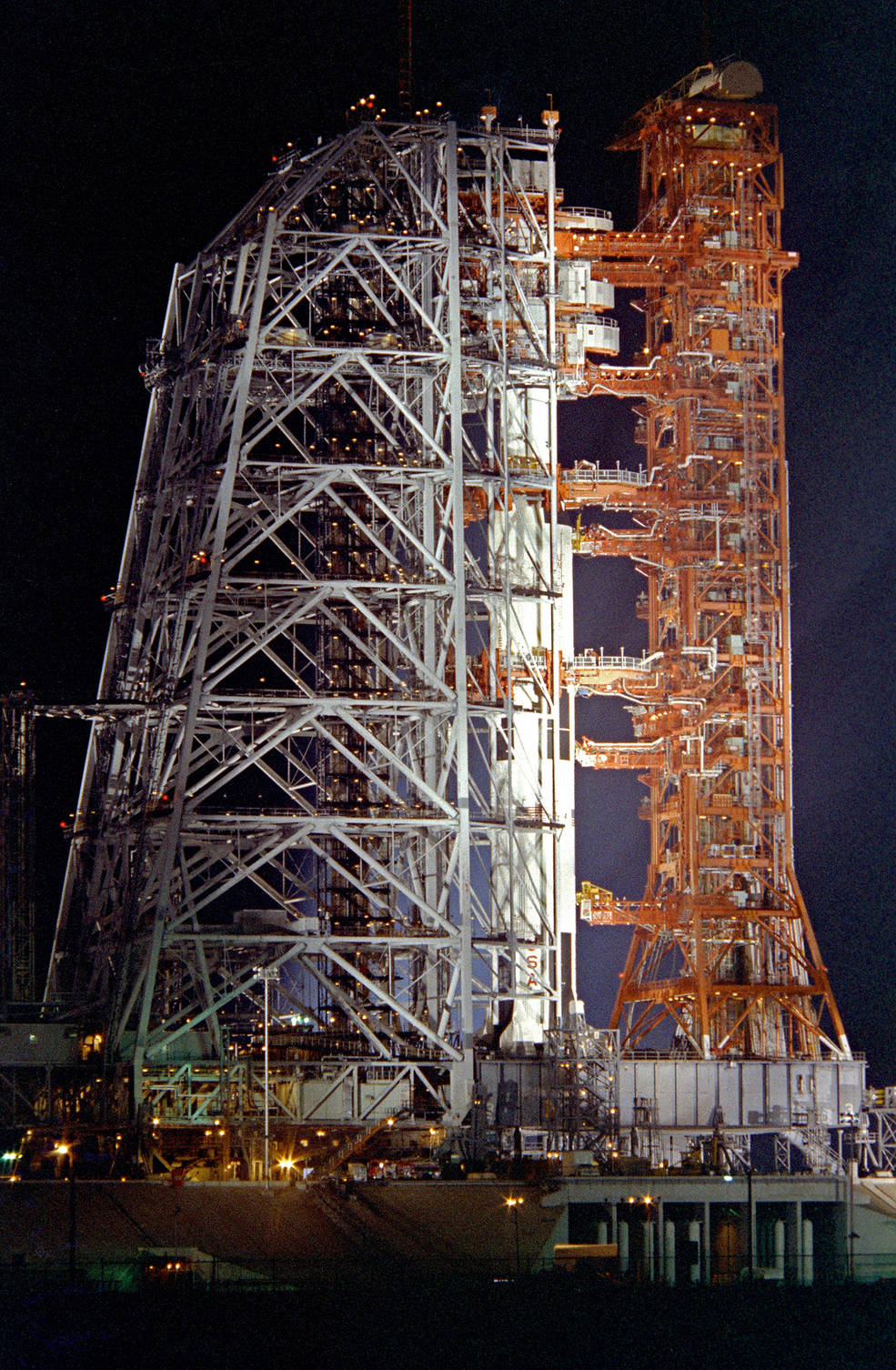
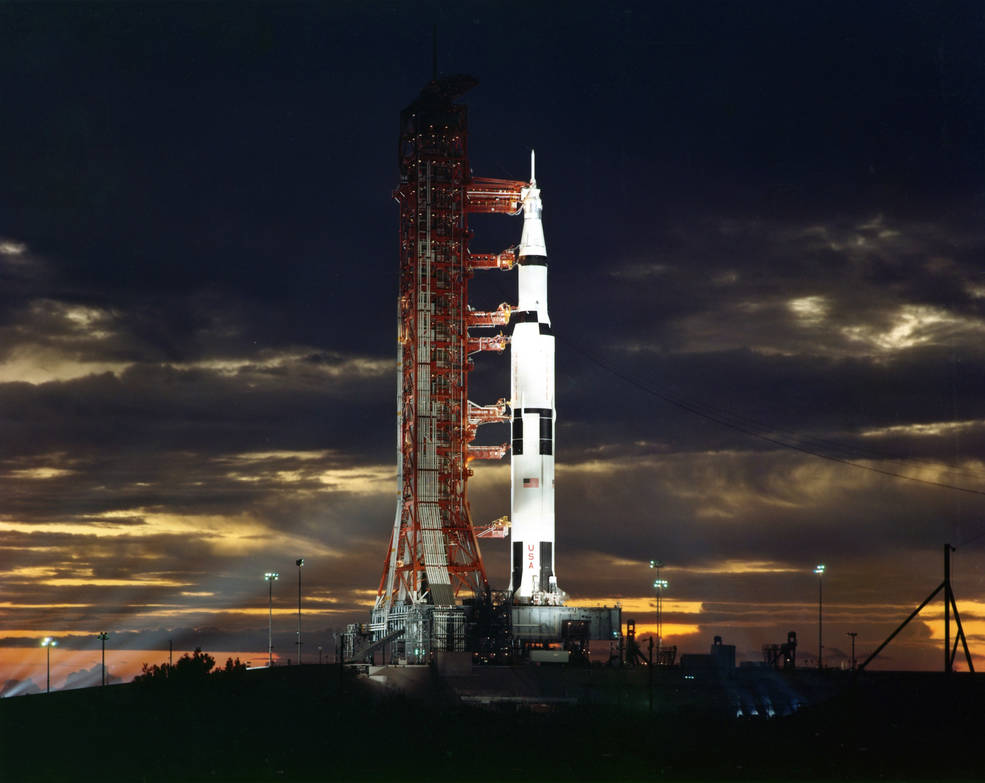
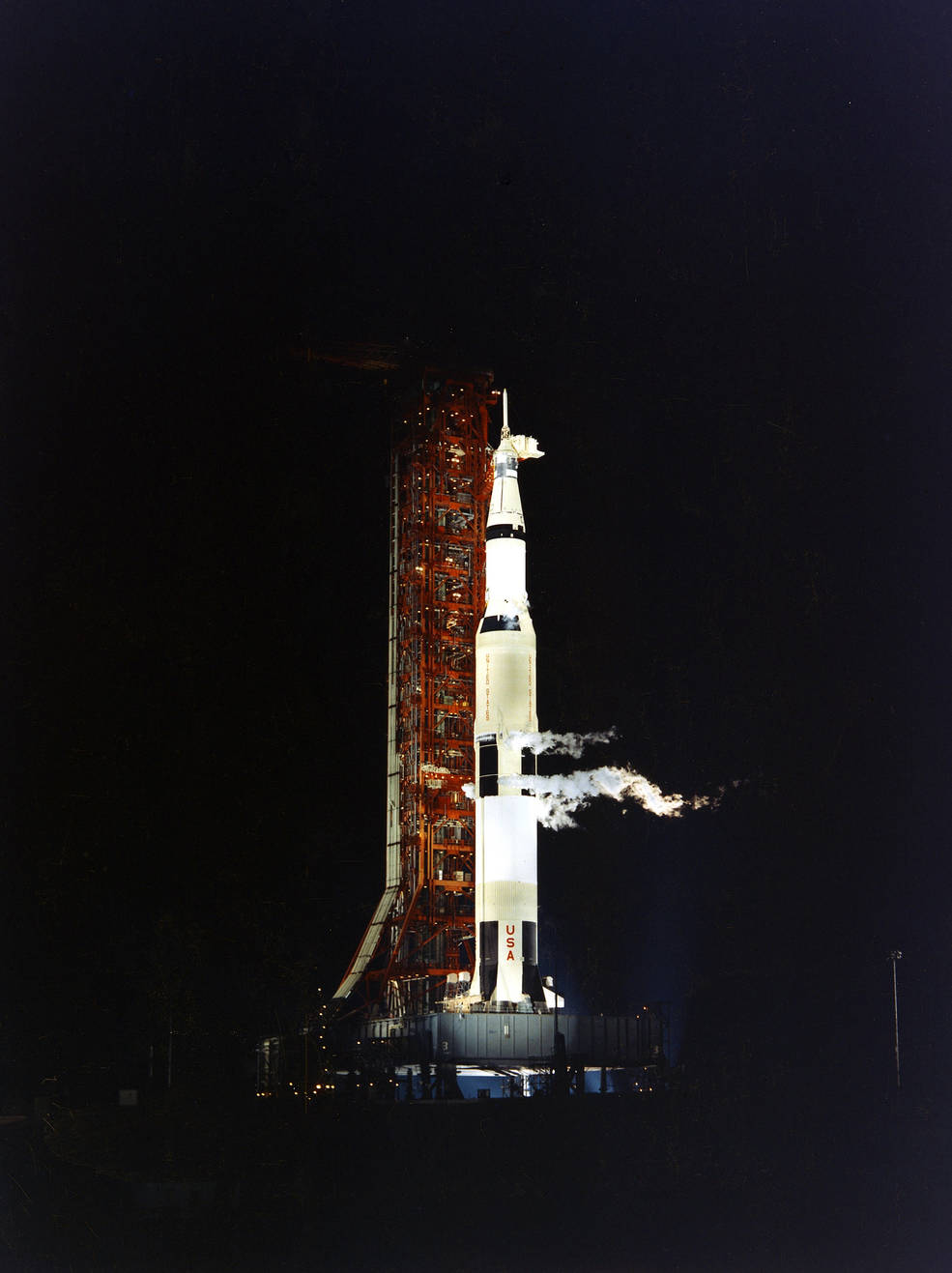
Left: The Mobile Service Structure surrounds the Apollo 17 Saturn V rocket on Launch Pad 39A in preparation for the Countdown Demonstration Test (CDDT). Middle: The Saturn V rocket during the CDDT. Right: Vapor plume indicates the Saturn V is fueled for the CDDT.
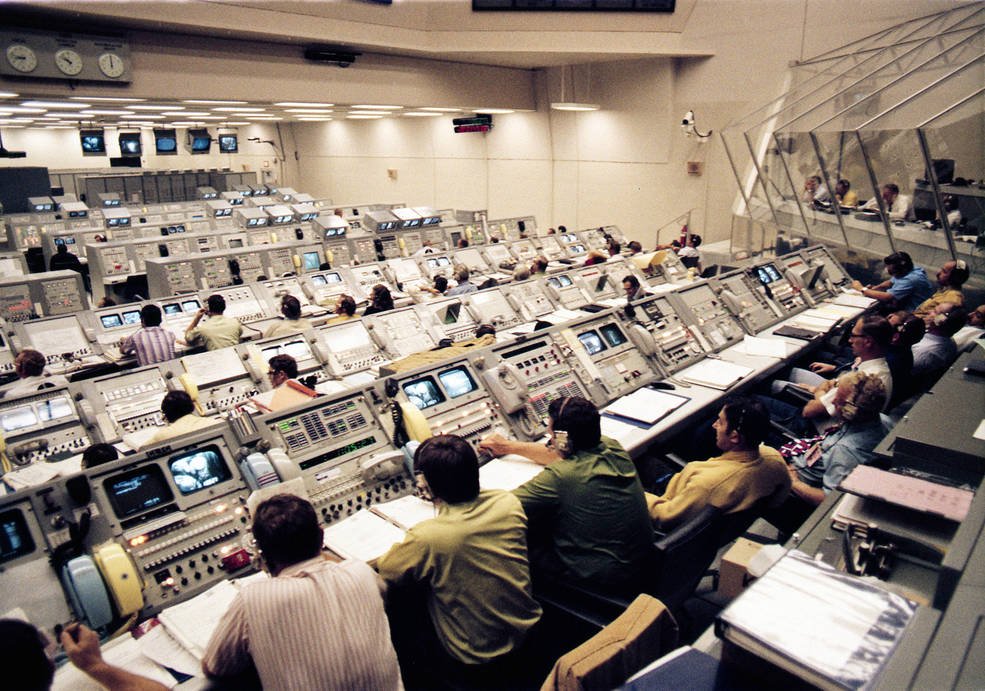
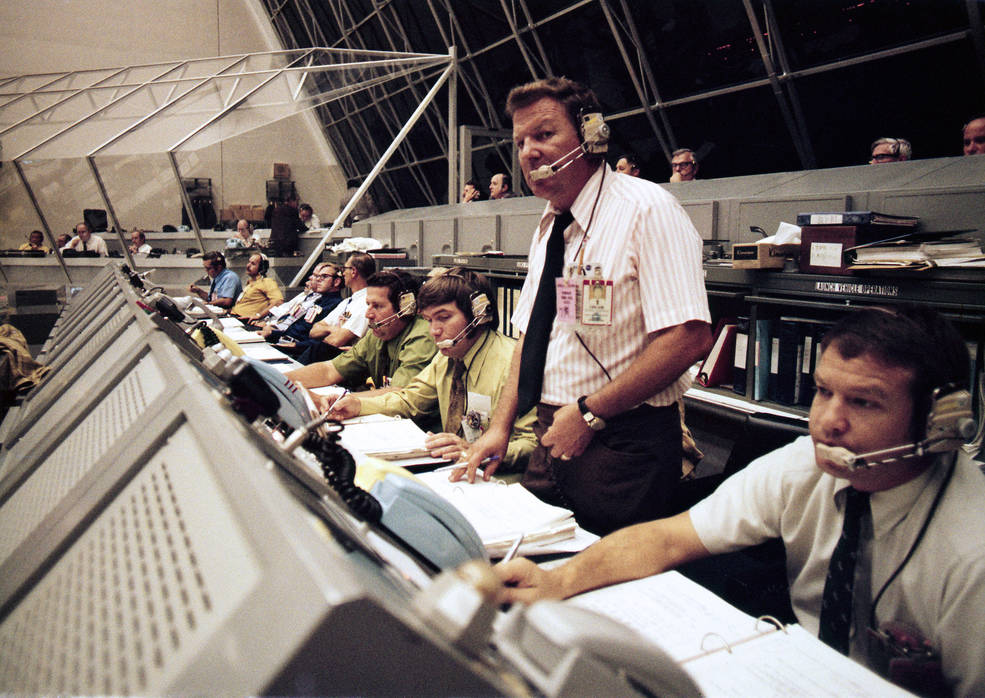
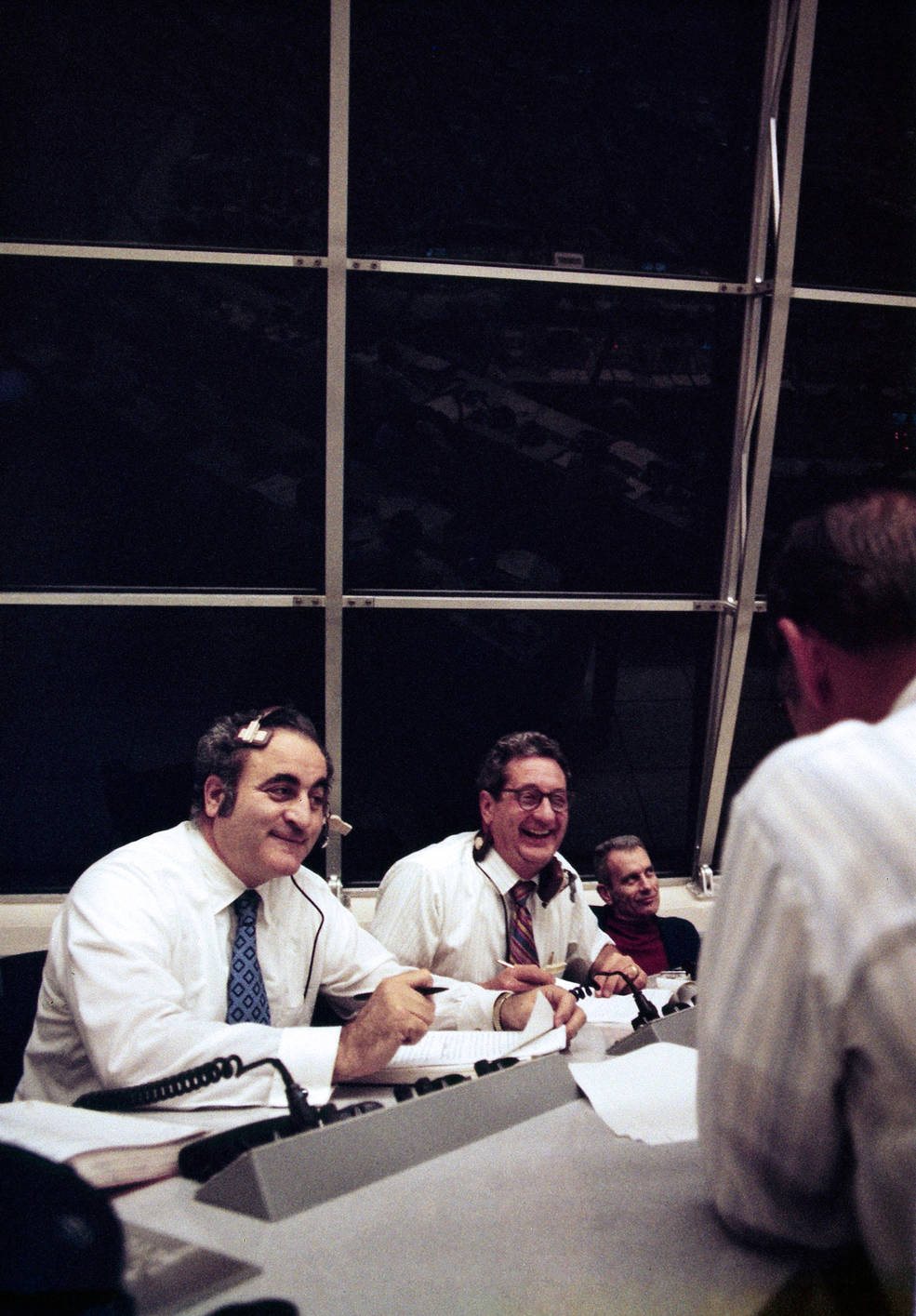
Left: Engineers in Firing Room 1 of the Launch Control Center at NASA’s Kennedy Space Center in Florida conduct the Apollo 17 Countdown Demonstration Test (CDDT). Middle: In Firing Room 1, Test Director Norman M. “Norm” Carlson, standing, monitors the CDDT. Right: Apollo Program Director Rocco A. Petrone, left, Mission Director Chester M. “Chet” Lee, and Director of Flight Crew Operations at the Manned Spacecraft Center, now NASA’s Johnson Space Center in Houston, Donald K. “Deke” Slayton observe the CDDT.
The final major test before launch of the Apollo 17 Saturn V space vehicle consisted of the Countdown Demonstration Test (CDDT), a dress rehearsal for the final countdown to launch, consisting of two parts. Engineers in Firing Room 1 of KSC’s Launch Control Center conducted the CDDT, led by Test Director Norman M. “Norm” Carlson. During the first or “wet” portion of the test, begun on Nov. 15, engineers carried out the entire countdown, including propellant loading, down to 8.9 seconds, the start of ignition sequence for the first stage engines. The astronaut crew did not participate in the wet CDDT.
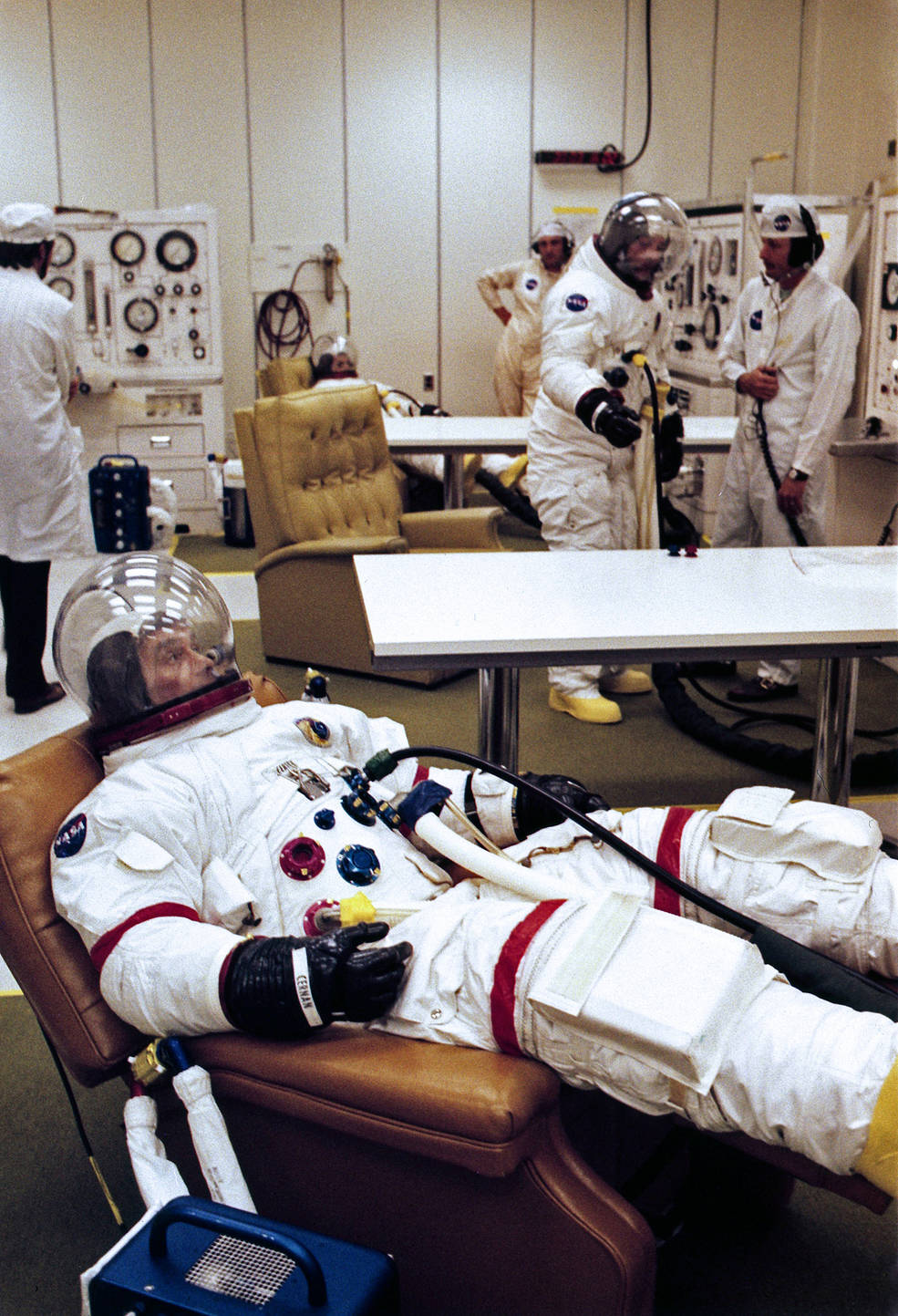
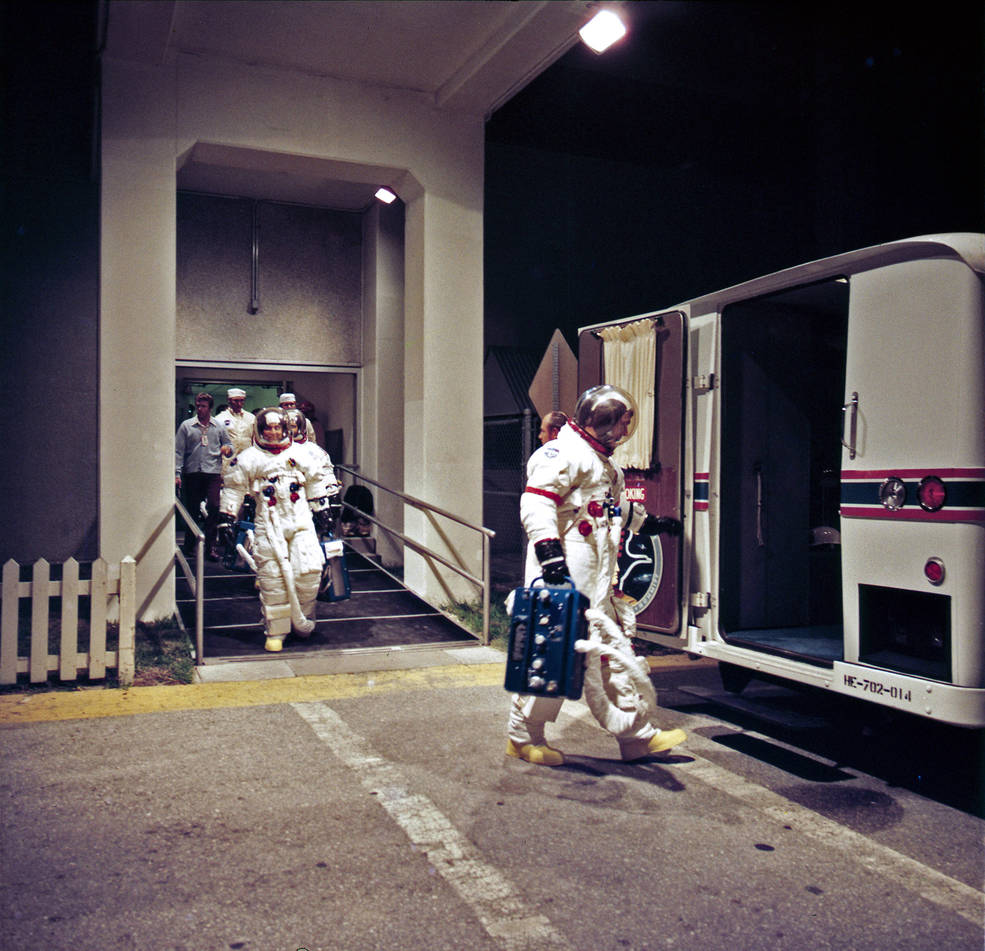
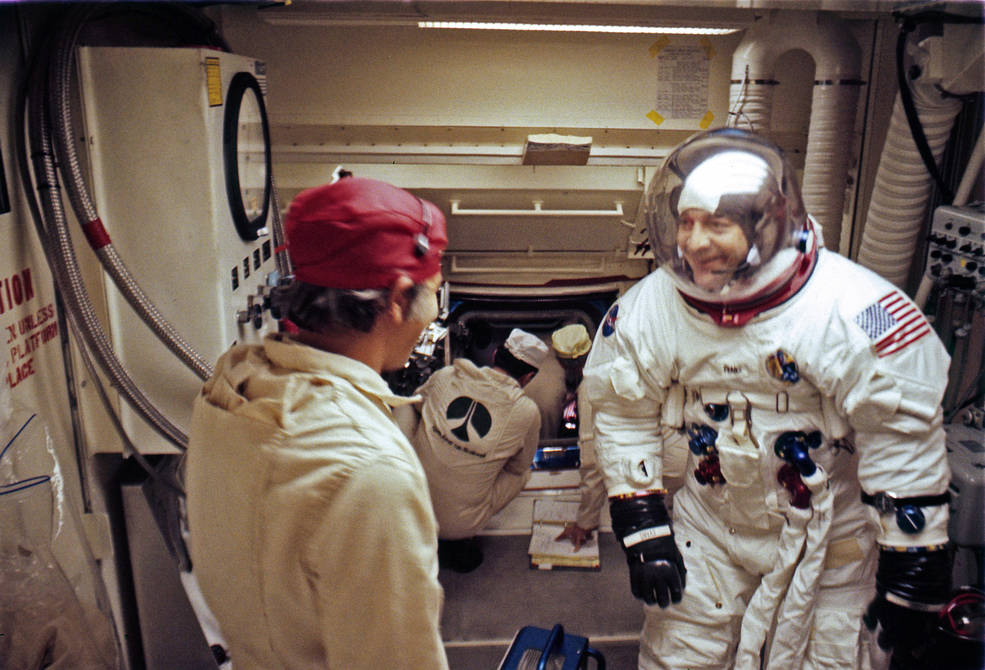
Left: Apollo 17 astronauts Eugene A. Cernan, front, Ronald E. Evans, and Harrison H. “Jack” Schmitt suit up in preparation for the Countdown Demonstration Test (CDDT). Middle: Cernan, front, Evans, and Schmitt prepare to board the van for the ride out to Launch Pad 39A for the CDDT. Right: In the White Room, Evans prepares to board the Command Module for the CDDT – Cernan and Schmitt have already boarded.
At the completion of the wet CDDT, ground crews drained the cryogenic propellants (liquid oxygen and liquid hydrogen) from the rocket. On Nov. 21, engineers repeated the final day of the countdown test, simulating the cryogenic fuel loading, and the astronauts participated in this “dry” portion of the CDDT. They suited up as they would on launch day, rode the transfer van to the pad, and climbed aboard the Command Module. They practiced the countdown until a simulated first stage ignition.
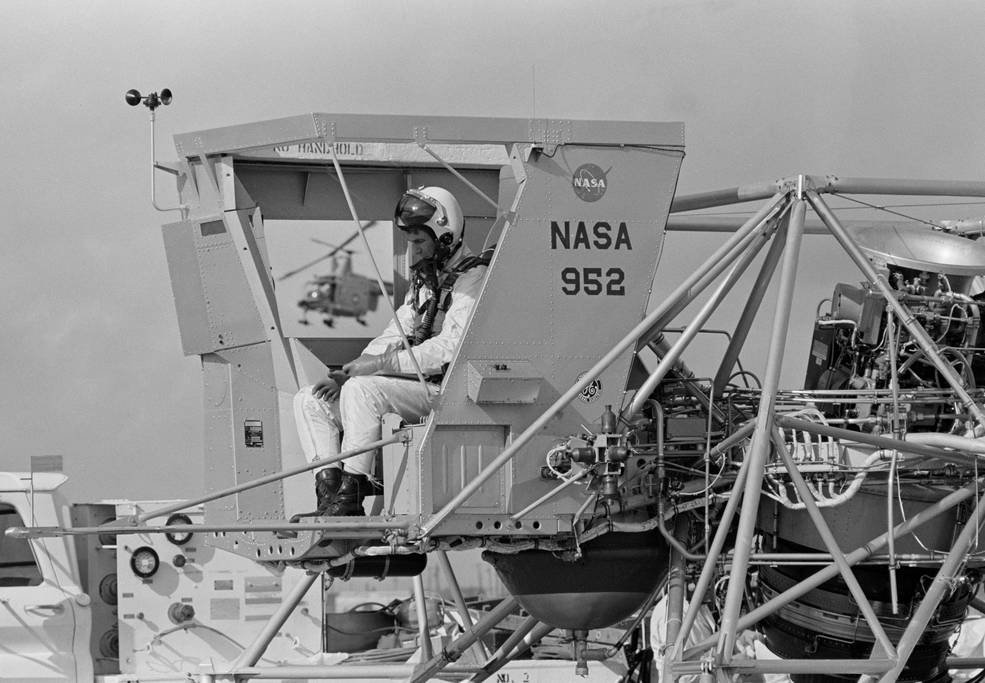
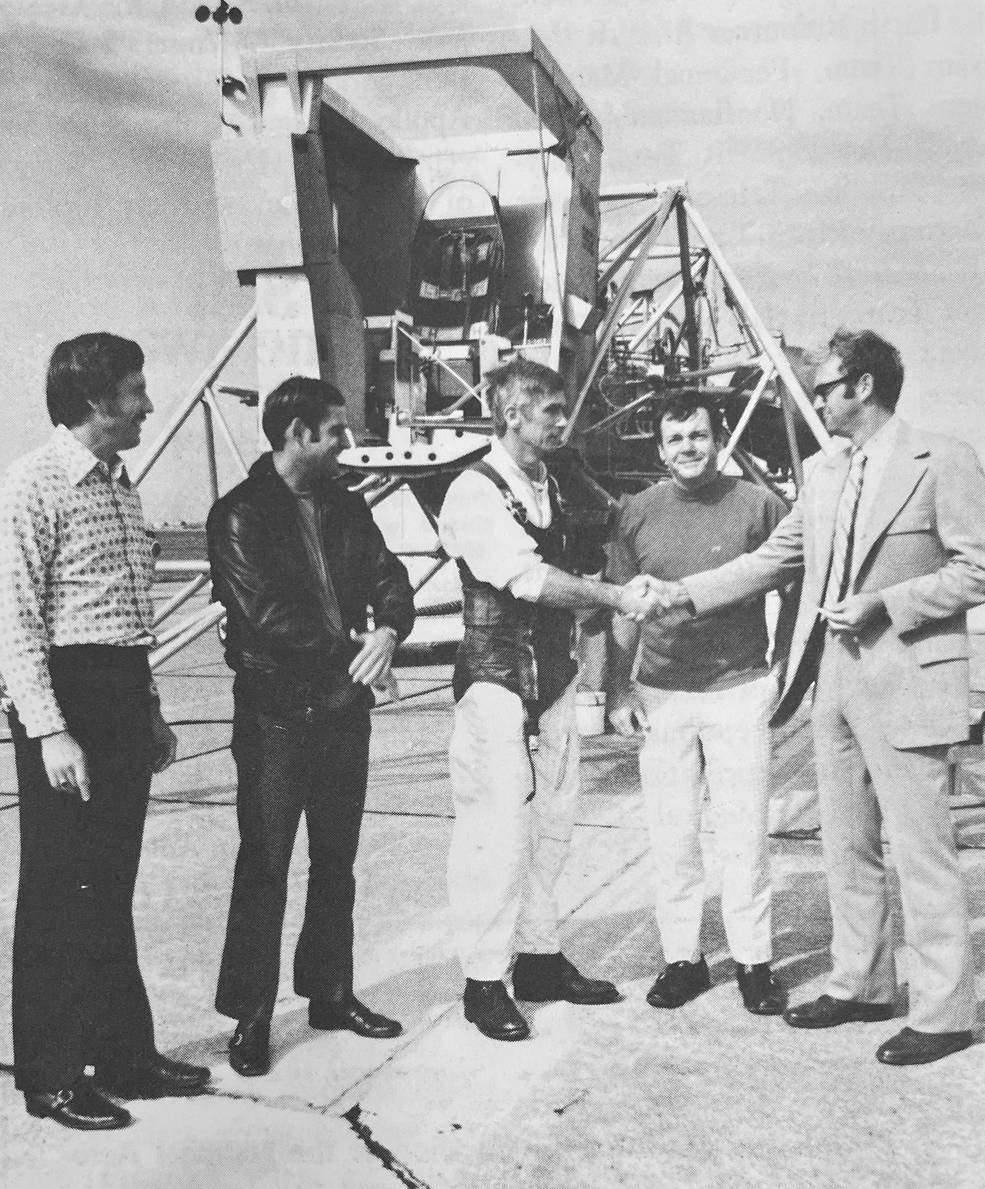
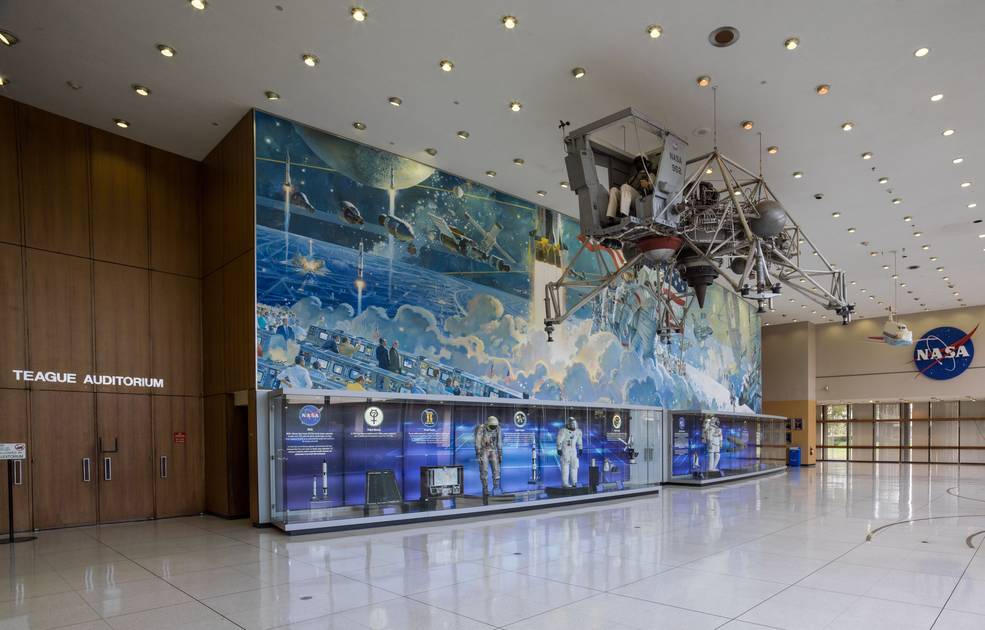
Left: Apollo 17 astronaut Eugene A. Cernan prepares to fly the Lunar Landing Training Vehicle (LLTV) at Ellington Air Force Base in Houston. Middle: Cernan, middle, congratulates the LLTV ground team following the vehicle’s final flight. Right: The LLTV on display outside the Teague Auditorium at NASA’s Johnson Space Center in Houston.
Apollo mission commanders flew the LLTV at Ellington Air Force Base near the Manned Spacecraft Center, now NASA’s Johnson Space Center (JSC) in Houston, to train for the powered descent to the lunar surface. The LLTV simulated the Lunar Module’s (LM) flying characteristics, especially of the final 500 feet of the descent. Although challenging to fly, Apollo commanders considered training with the LLTV essential to learn the skills needed to pilot the LM to the lunar surface. In early November, both Cernan and his backup Young completed several flights using LLTV-3, the only surviving aircraft of its type, with the other two destroyed in crashes in 1968 and 1971 – the pilots on both those flights survived. On Nov. 13, on his 46th flight aboard the training aircraft, Cernan completed the final flight of the LLTV. The LLTV-3 aircraft is on display outside the Teague Auditorium at JSC.
To be continued…
John Uri
NASA Johnson Space Center

























